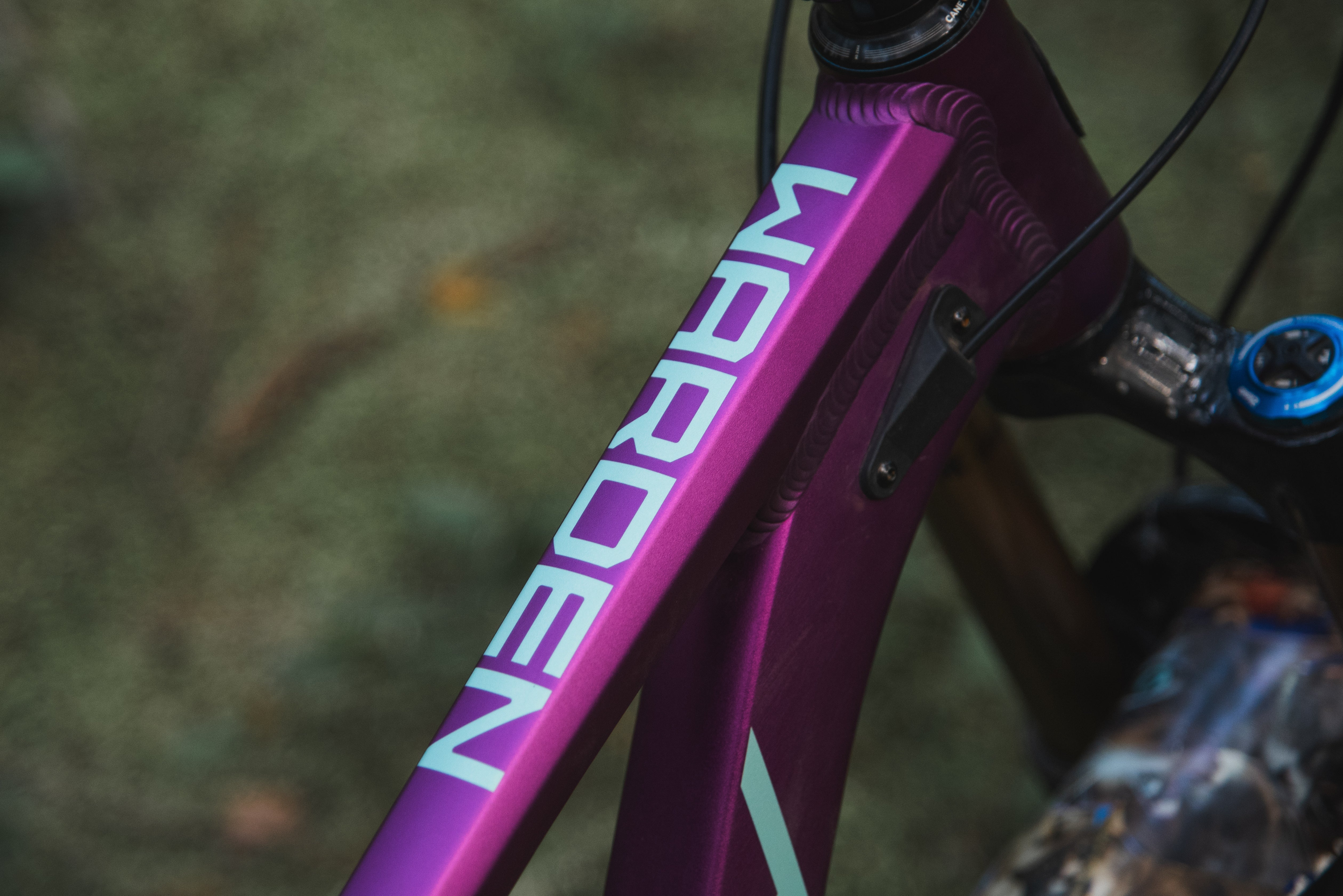Words by: Ken Fung
Since the early days, we have evolved our alloy frame cable housing management system from externally routed (Delirium V1~V3, Endorphin V1~V2, Chilcotin V1~2), to half internal and half external (Delirium V4, Endorphin V3, and Warden V1), to a fully internal routed system found on the most modern Knolly models starting with the launch of the Fugitive in 2018.
WARDEN CARBON
When we first designed our Warden Carbon in 2016*, its’ cable management system influenced the alloy models that followed. Our alloy frame tube sets began to mirror the flowy organic shapes of carbon design by means of using advanced tooling to get highly manipulated alloy tubes. We wanted to keep the sleek and svelte look of the carbon frame and not disturb it with exposed cable housing on the surface of the tubes so this meant purposeful design and engineering of our alloy frames.
There’s no tubes in the tubes? And there is no housing rattle… how?
Simple. Using rubber grommets at the head tube entrance and behind the seat tube PLUS having the housing bend at the bottom bracket region, creates enough friction to keep the housing tensioned inside the tube and prevent rattling from happening inside the frame on the roughest terrain.
In addition, under the bash guard on the underside of the frame, there’s an access hole (which is as large as a deck of cards on its side). This acts as the door to access internal cable housing routing and makes installation extremely easy when building or replacing old housing for your dropper or derailleur. When installing new housing, we suggest starting from the port behind the seat tube so that when you insert the housing at the entrance, the end exits out the bottom bracket region before reinsertion into the downtube to have the housing exit at the headtube junction. At the entry point behind the seat tube, there’s a rubber gasket that the housing must enter, which grips it to prevent rattling and also keeps moisture and the elements from entering the frame.
In general, we aim to put thoughtful engineering and design into our frame designs especially when it comes to the smallest details such as housing routing which minimizes rattling/noice when riding in all conditions.
*In 2019 we decided to end production of the Carbon Warden because of realigning our ethos of the human and environmental costs of carbon frame production and sticking with the narrative of metal bikes with high tube manipulation and pushing the envelope of metal mountain bike frame design that closely aligns with the weight of carbon.






Comments
I second Michael’s comment about the seat tube insertion point gasket – the concept is sound, just needs a more robust implementation with higher cable holding force and generally a tighter seal. That area can collect water and dirt fairly easily and could generally be improved a bit.
I would love to see a more robust rubber gasket for the seat tube insertion point. The thin one you guys are using today is prone to damage during routing and/or maintenance. I’ve even accidentally pulled one through the hole in the frame and had to fish it out. My own fault but would still like to see a thicker piece there that could hold its shape a little better.
as someone who does not like internal routing, this new design isnt too shabby, however on a size L warden MX, im at the absolute limit of length on all my cables, my rear brake JUST makes it, with brand new shimano saints, cant turn the bars left more than 90 degrees (moto brakes)
Building and maintaining a number of Knolly models over the past years, I really appreciate the developments and improvements with the cable routing. Cable and housing insertions are relatively simple and everything definitely just stays in place with no noise!!